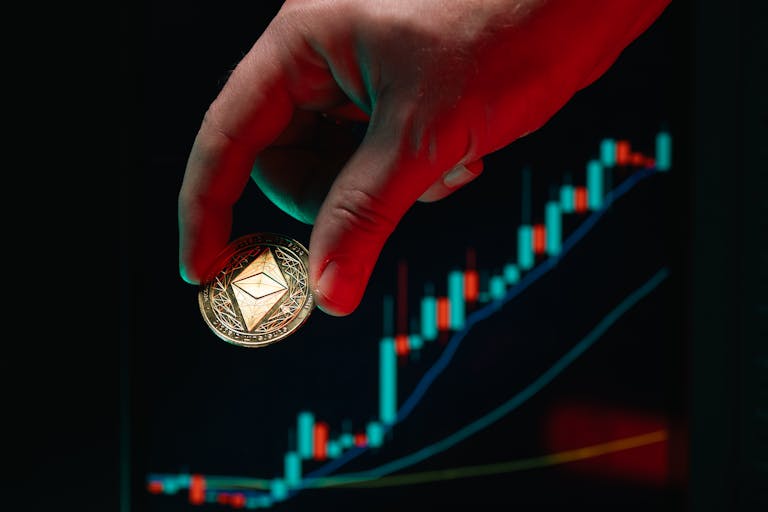Binance Futures Trading Strategies: A Comprehensive Guide for Traders
Binance, one of the world’s largest cryptocurrency exchanges, offers a robust futures market that allows traders to speculate on price movements of digital assets using leverage. Futures trading on Binance can be highly profitable but also carries significant risks due to the volatile nature of cryptocurrencies. To succeed, traders must adopt well-structured strategies that align with their risk tolerance, goals, and market understanding. This article explores key strategies for Binance futures trading, emphasizing technical analysis, risk management, and advanced techniques.
1. Understanding Binance Futures
Binance Futures are contracts that obligate traders to buy or sell an asset at a predetermined price and date. They allow traders to profit from both rising and falling markets via long (buy) and short (sell) positions. Binance offers perpetual futures (no expiration date) and options (call/put contracts). Leverage (e.g., up to 100x) amplifies both gains and losses, making risk management critical.
2. Common Binance Futures Trading Strategies
a. Day Trading
Day traders open and close positions within the same day, capitalizing on short-term price fluctuations. Key tools:
- Technical Indicators: Use tools like Moving Averages (MA), Relative Strength Index (RSI), and MACD to identify entry/exit points.
- Scalping: Focus on small, frequent profits by exploiting minor price gaps.
- Volatility Trading: Bet on price swings during news events (e.g., halvings, regulatory updates) using stop-loss and take-profit orders.
Example: A trader might use the RSI 30/70 levels to enter a long position when the RSI hits 30 (oversold) and exit when it reaches 70 (overbought).
b. Swing Trading
Swing traders hold positions for a few days to weeks, aiming to capture mid-term trends. This strategy involves:
- Chart Patterns: Identifying support/resistance levels, head-and-shoulders, or triangles.
- Trend Following: Using Bollinger Bands or Trend Lines to ride bullish or bearish trends.
- News and Fundamentals: Monitoring macroeconomic factors or project developments (e.g., partnerships, upgrades).
Example: A trader might buy BTC if it breaks above a key resistance level and hold for a few days, expecting further gains.
c. Position Trading
Long-term traders (position traders) hold contracts for weeks, months, or even years, betting on macroeconomic shifts. This requires:
- Fundamental Analysis: Assessing blockchain projects, market adoption, and regulatory changes.
- Market Sentiment: Tracking overall crypto market trends (e.g., bull runs, bear markets).
- Hedging: Using futures to protect long-term holdings from price volatility.
Example: A position trader might short Bitcoin during a bear market, anticipating a prolonged downturn, while hedging with stablecoins.
3. Technical Analysis Strategies
Technical analysis is a cornerstone of futures trading on Binance. Here are popular strategies:
- Moving Averages Crossovers:
- Golden Cross: When the 50-day MA crosses above the 200-day MA (bullish signal).
- Death Cross: When the 50-day MA crosses below the 200-day MA (bearish signal).
- Support/Resistance Breaks:
- Enter long positions when a price breaks above a resistance level or short positions when it drops below support.
- RSI and MACD:
- RSI (Relative Strength Index) helps identify overbought (RSI >70) or oversold (RSI <30) conditions.
- MACD (Moving Average Convergence Divergence) detects momentum shifts and potential trend reversals.
Tip: Combine multiple indicators to reduce false signals. For instance, a bullish RSI and a MACD histogram crossing above zero could confirm a buy opportunity.
4. Risk Management: The Key to Survival
Futures trading involves high risk, so disciplined risk management is non-negotiable:
- Position Sizing: Allocate funds based on your risk appetite. Avoid risking more than 1-2% of your portfolio on a single trade.
- Stop-Loss and Take-Profit Orders:
- Use stop-loss orders to limit losses (e.g., 5% below entry price) and take-profit orders to secure gains (e.g., 10% above entry price).
- Leverage Management:
- Start with low leverage (1x–10x) and avoid over-leveraging, which can lead to liquidation.
- Diversification: Don’t put all capital into one asset; spread trades across BTC, ETH, and altcoins.
Example: If you open a BTC long position with 10x leverage, a 1% price drop could result in a 10% loss. A 5% stop-loss would protect against larger drawdowns.
5. Arbitrage Opportunities
Binance’s global reach creates arbitrage opportunities:
- Cross-Exchange Arbitrage: Buy an asset on one exchange (e.g., KuCoin) and sell it on Binance at a higher price.
- Perpetual vs. Spot Arbitrage: Profit from price discrepancies between Binance’s spot and perpetual futures markets.
- Triangular Arbitrage: Exploit price differences across three related assets (e.g., BTC, USDT, and ETH).
Note: Arbitrage requires fast execution, low fees, and knowledge of Binance’s API or third-party tools.
6. Hedging and Portfolio Protection
Futures can hedge risks in a crypto portfolio:
- Shorting Bitcoin: If you hold a long position in BTC but fear a downturn, short it via futures to offset potential losses.
- Pair Trading: Pair long and short positions in correlated assets (e.g., BTC and ETH) to neutralize market-wide risks.
Example: A trader with a long ETH position might also short BTC to guard against a broader market crash.
7. Algorithmic and Automated Trading
For advanced traders, Binance’s API and bots can automate strategies:
- Quantitative Strategies: Use algorithms to execute trades based on predefined rules (e.g., mean reversion, momentum).
- Backtesting: Test strategies on historical data to evaluate performance.
- Bots: Tools like 3Commas or TradingView can auto-trade, but success depends on accurate parameters and market conditions.
Caution: Automated trading carries risks, including technical glitches and over-optimization. Always monitor bots and ensure robust safeguards.
8. Advanced Techniques
- Futures Options: Use call/put options to profit from volatility or predict price movements.
- Short-Term vs. Long-Term Volatility: Adjust strategies based on market phases (e.g., scalping during high volatility, long-term bets during consolidation).
- Leverage Utilization: Use leverage to amplify gains but avoid "over-leveraging" (e.g., 100x is risky for most traders).
Pro Tip: Understand the funding rate and liquidation mechanics on Binance to avoid unwanted losses in perpetual contracts.
9. Psychological Discipline
Emotions can derail even the best strategies:
- Stick to a Plan: Avoid impulsive trades based on FOMO (fear of missing out) or panic selling.
- Review and Adapt: Regularly assess strategy performance and adjust parameters.
- Keep a Trading Journal: Track wins, losses, and decisions to improve over time.
10. Case Study: A Simple Binance Futures Strategy
Scenario: A trader wants to capitalize on Bitcoin’s short-term dip.
- Entry: Short BTC/USDT when the 50-day MA crosses below the 200-day MA (death cross).
- Stop-Loss: Set at 5% above entry price to limit risk.
- Take-Profit: Target 10% downward movement.
- Exit: If the price rises above the stop-loss, close the trade to prevent further losses.
This strategy relies on technical analysis and strict risk controls.
Conclusion: Success on Binance Futures Requires Balance
Binance futures trading is a powerful tool for experienced investors but demands a clear strategy, strict risk management, and emotional control. Whether you’re a day trader using RSI or a position trader analyzing fundamentals, always prioritize education, practice with a demo account, and stay informed about market dynamics. Remember: no strategy guarantees success, but combining technical analysis, discipline, and adaptability can improve your chances in this high-stakes environment.
Final Thought: Cryptocurrency markets are unpredictable, so never risk more than you can afford to lose. Start with small positions, educate yourself, and evolve your strategies as you gain experience.
Note: This article is for informational purposes only and does not constitute financial advice. Always conduct your own research and consult a professional before trading.







